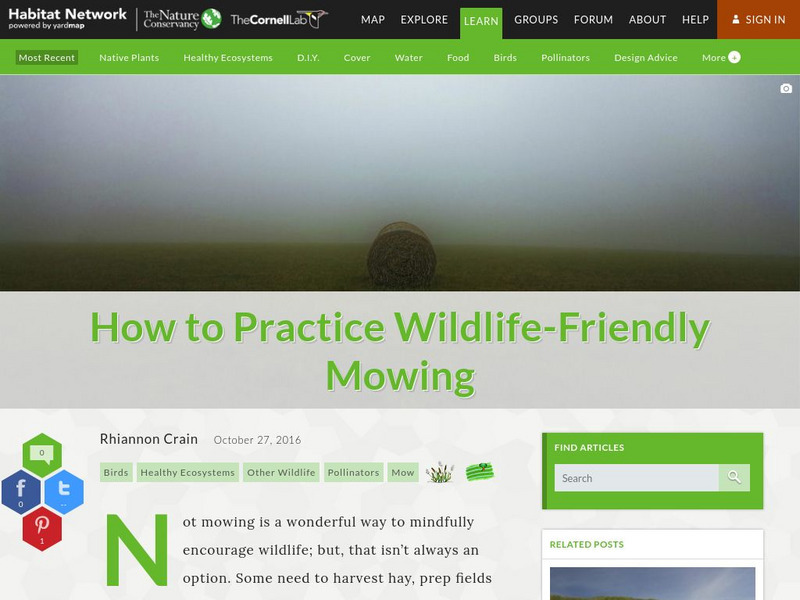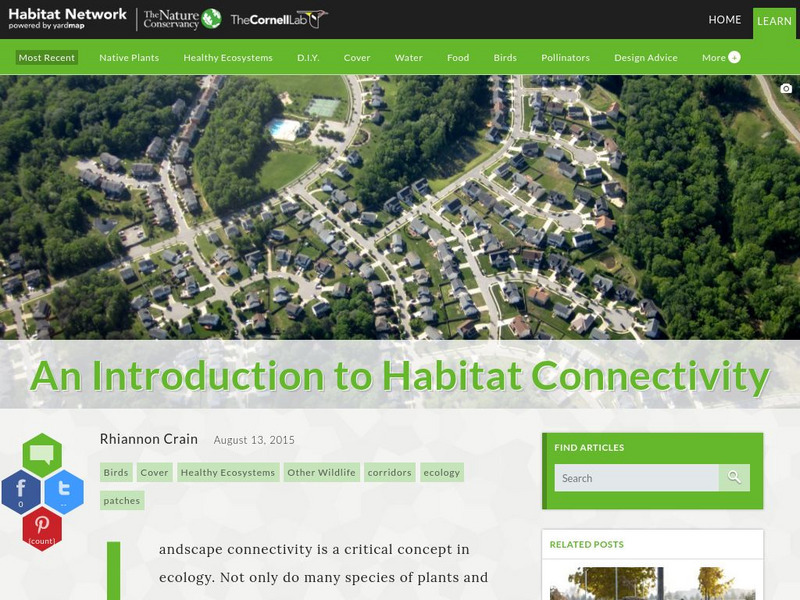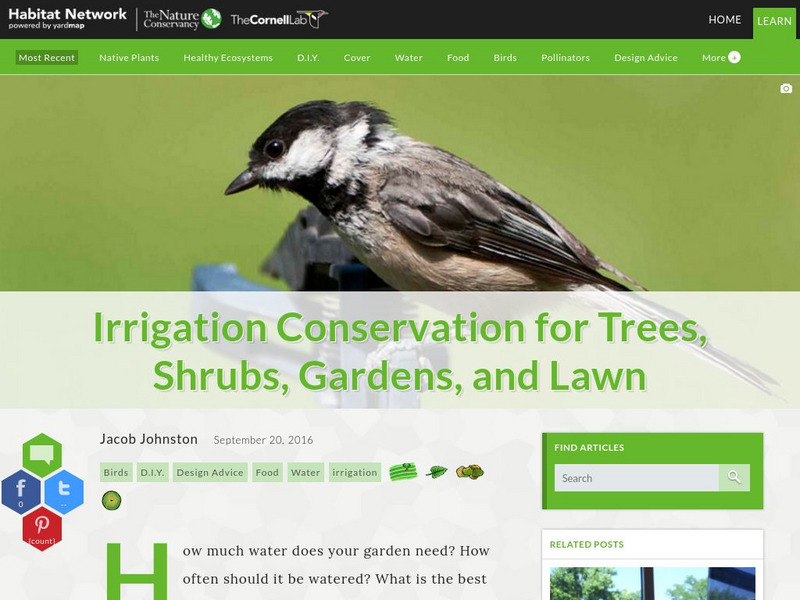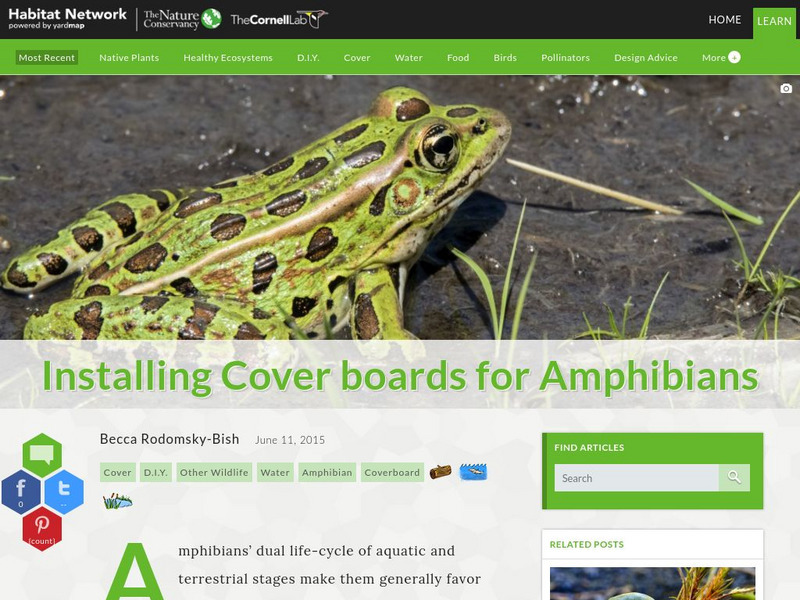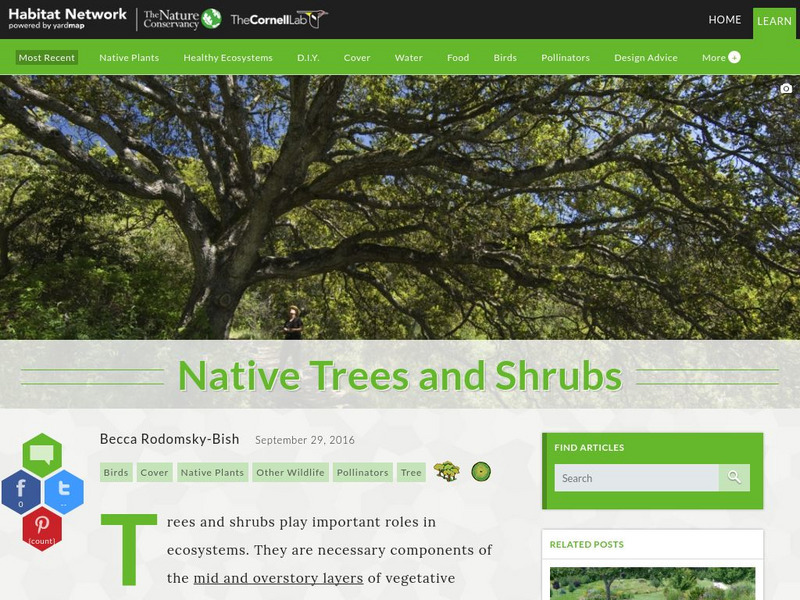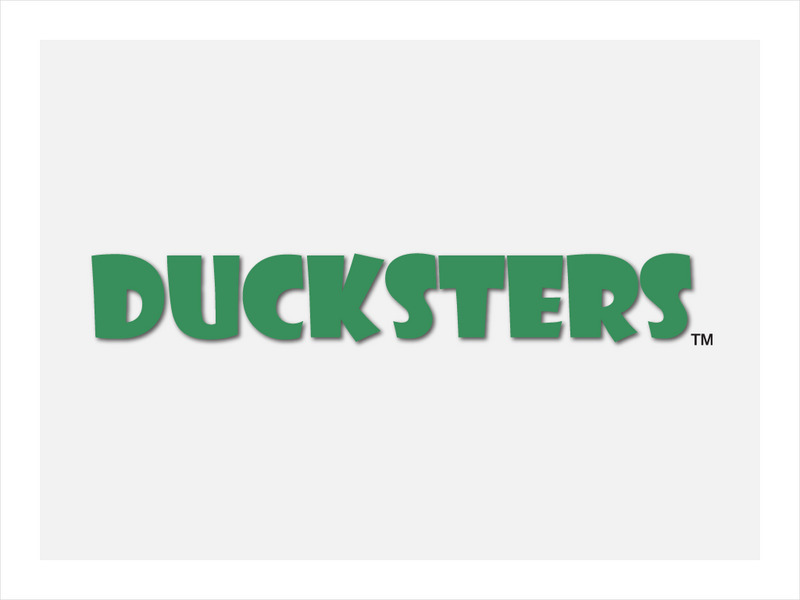Cornell Lab of Ornithology
Habitat Network: Must We Mow? Increase Wildlife Value of Working Landscapes
Learn about the ecological benefits of allowing a landscape to grow naturally without mowing.
Cornell Lab of Ornithology
Habitat Network: How to Practice Wildlife Friendly Mowing
When it is time to mow, find out the simple strategies to consider to minimize negative impacts on wildlife.
Cornell Lab of Ornithology
Habitat Network: Take Control of Herbicide Use on Your Property
Here's what you need to know to make an informed choice on the best strategy to tackle backyard weeds.
Cornell Lab of Ornithology
Habitat Network: An Introduction to Habitat Connectivity
Find out about the idea that landscape connectivity is a critical concept in ecology.
Cornell Lab of Ornithology
Habitat Network: The (Un)importance of Lawn
Find out why it is important to grow more than just a lawn full of grass in a backyard habitat.
Cornell Lab of Ornithology
Habitat Network: Irrigation Conservation for Trees, Shrubs, Gardens, and Lawn
Find out how to provide the proper amount of water for optimal growth and biodiversity in a backyard habitat.
Cornell Lab of Ornithology
Habitat Network: Tips for Photographing Landscaping Beautifully
Habitat Network encourages members to get in the habit of regularly photographing their sites, often yards, twice a year.
Cornell Lab of Ornithology
Habitat Network: Installing Cover Boards for Reptiles
Learn how to provide a cover board for reptiles who generally prefer drier conditions.
Cornell Lab of Ornithology
Habitat Network: Installing Cover Boards for Amphibians
Find out how to make a cover board for Amphibians' dual life-cycle of aquatic and terrestrial stages.
Cornell Lab of Ornithology
Habitat Network: Support Dragonflies: A Goal for Your Site?
Find out why dragonflies are beneficial to a backyard habitat.
Cornell Lab of Ornithology
Habitat Network: Manage Water: A Goal for Your Site?
Find out how to set goals and manage water for a local backyard habitat.
Cornell Lab of Ornithology
Habitat Network: Amazing Animals That Use Vernal Pools
Find out about species that use vernal pools for reproduction and continuity of life.
Cornell Lab of Ornithology
Habitat Network: Black Walnut Resistance, Virginia: Design Challenge
Design challenges take photos of tricky spots in people's yards and put them out there for advice from the professionals at the Cornell Lab of Ornithology. Check out this tired backyard from Virginia.
Cornell Lab of Ornithology
Habitat Network: Wildlife Habitat Category in the Groups Data Visualization
Habitat Network has combined all the vegetatively-complex habitat polygons into categories here.
Cornell Lab of Ornithology
Habitat Network: Seeds, Glorious Native Seeds
A guide to finding the right seeds for a particular backyard habitat.
Cornell Lab of Ornithology
Habitat Network: Native Trees and Shrubs
Find out why vegetation such as trees and shrubs play important roles in ecosystems.
Cornell Lab of Ornithology
Habitat Network: Habitat Feature: Evergreens
Learn how evergreen plants, both trees and shrubs have important roles to play in landscaping- from aesthetic to ecological.
Cornell Lab of Ornithology
Habitat Network: Constant Bloom in Coral Springs: Design Challenge
Design Challenge takes photos of tricky spots in people's yards and puts them out there for advice from the professionals at the Cornell Lab of Ornithology. Check out this how to help yard in the Everglades become more biodiverse.
University of Illinois
University of Illinois: Illinois Natural History Survey: The Tallgrass Prairie
This site from the Illinois Natural History Survey provides a large list of grassland plants of the Illinois Tallgrass Prairie - some 851 species. You can find out the common name, scientific name, habitat, flowering period, fruits, and...
Alabama Learning Exchange
Alex: Invasive Plants
Invasive plants are non-native plants that grow in an environment that has no native diseases, parasites, or predators. This allows them to grow rapidly and be destructive to native plants.
Alabama Learning Exchange
Alex: Gymnosperms, Cone Bearing Vascular Plants
Students will research printed encyclopedias, Internet resources (thinkfinity.org) and their science textbook to gather information to answer questions and draw an assigned portion of the Life Cycle of the Gymnosperms. This lesson plan...
Environmental Education for Kids
Eek!: Wildflowers
Take an online walk with EEK! and view wildflowers of the woods, wetlands and prairies. Then go outside, take a hike, and see if you can spot any of these beautiful bloomers.
TED Talks
Ted: Ted Ed: Why Are There So Many Types of Apples?
Have you ever walked into a grocery store and wondered where all the varieties of apples came from? Theresa Doud describes the ins and outs of breeding apples. [4:28]
Ducksters
Ducksters: Biology for Kids: Non Flowering Plants
On this site, learn about the biology of non-flowering plants including gymnosperms, conifers, cones, seed, spores, ferns, and mosses.
Other popular searches
- Plant Diversity Activities
- Plant Diversity Map
- Genetics and Plant Diversity
- Plant Diversity Section 22.2
- Plant Diversity Section 222
- Plant Diversity Worksheet



